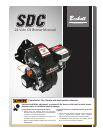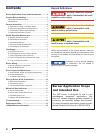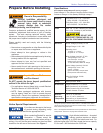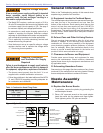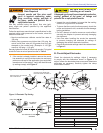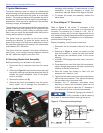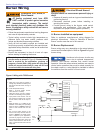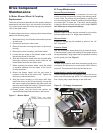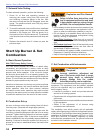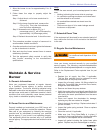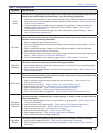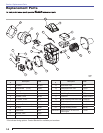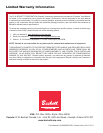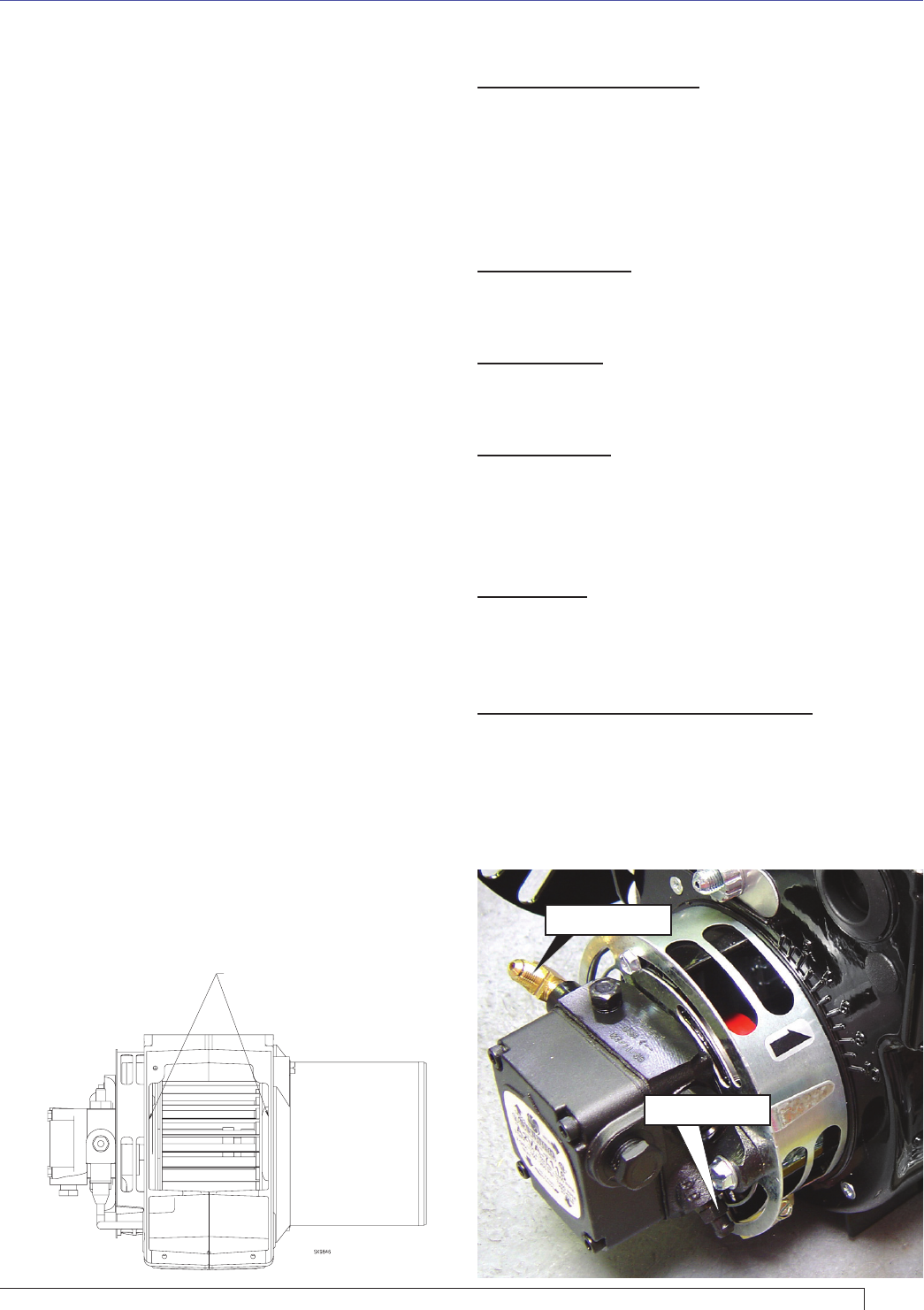
9
24 Vdc SDC Burner Manual
Section: Drive Component Maintenance
Drive Component
Maintenance
A. Motor, Blower Wheel, & Coupling
Replacement
The motor will require replacement if the proper voltage is
measured at the motor input, and the motor will either not
run, or the current draw with a free running pump exceeds
10% of the rated current.
To replace the burner motor, coupling and/or blower wheel
perform the following steps.
Before servicing, turn off and/or disconnect all power
to the burner.
Disconnect the burner motor wires.
Remove the bolts securing the motor to the burner
housing.
Remove the motor, coupling, and blower wheel.
Loosen the set screw on the blower wheel to slide
the existing wheel off the shaft.
Slide the new blower wheel onto the old shaft (after
thoroughly cleaning housing) and/or slide the old
blower wheel onto the new motor shaft.
When replacing the blower wheel, verify the wheel
is centered between the two sides of the burner
housing as shown.
Rotate the blower wheel until the set screw is
centered on the fl at of the motor shaft. Tighten the
set screw to secure the wheel.
Slide the motor coupling on the motor shaft then
install the motor on the burner housing. Insure that
the motor coupling fi ts between the motor shaft and
the pump shaft inside the housing. Tighten the motor
retaining screws. Reconnect the wires.
Restore power, start the burner and perform the
combustion test described previously in this manual.
1.
2.
3.
4.
5.
6.
7.
8.
9.
10.
Figure 7. – Blower Wheel
CENTER WHEEL FOR EQUAL
DISTANCE FROM HOUSING SIDES
B. Pump Maintenance
General Pump Information
Important information - Long or oversized inlet lines may
require the pump to operate dry during initial bleeding period.
In such cases, the priming may be assisted by injecting fuel
oil in the pump gear set. Under lift conditions, lines and fi ttings
must be air tight. To assure this, “Pipe Dope” may be applied
to both the used and unused inlet and return fi ttings. Do NOT
use Tefl on tape or compression fi ttings.
Mounting Position
Beckett CleanCut pump may be mounted in any position
(except upside-down in a single pipe installation).
Vacuum Check
A Vacuum Gauge may be installed in either of the 1/4”
NPT inlet ports.
Pressure Check
Use the nozzle port when performing a pressure check.
If the bleed port is used, the reading on the gauge should
be approximately 5 psig higher than the pressure reading
on the nozzle port. See Figure 8.
Cutoff Check
To check cutoff pressure dead head a pressure gauge in the
nozzle port. Run the burner for a short period of time. Shut the
burner off. The pressure will drop and hold above zero.
Pressurized or gravity feed installations
These installations must not exceed 3 psig on inlet line or
return line at the pump per NFPA 31. A pressure greater
than 10 psig may cause damage to the shaft seal.
Figure 8. – Oil Supply Components
Bleed Port
Nozzle Port



